Follow these procedures to deploy Remote Clients (formerly Remote DX) monitoring onto machines running the HP ThinPro operating system that connect into an Omnissa (formerly VMware) environment. You can deploy Remote Clients monitoring onto:
For details on the feature, see Remote Clients - Client Device Metrics.
HP ThinPro online deployment for VMWare (Omnissa) environments
If the machine with HP ThinPro has an internet connection, you don’t have to download any files. You just need to follow this procedure using the provided script in step 4.
In the HPDM, go to the Templates & Rules page.
Select the _File and Registry template to open the Template Editor.

Select Add > Script. Click OK.
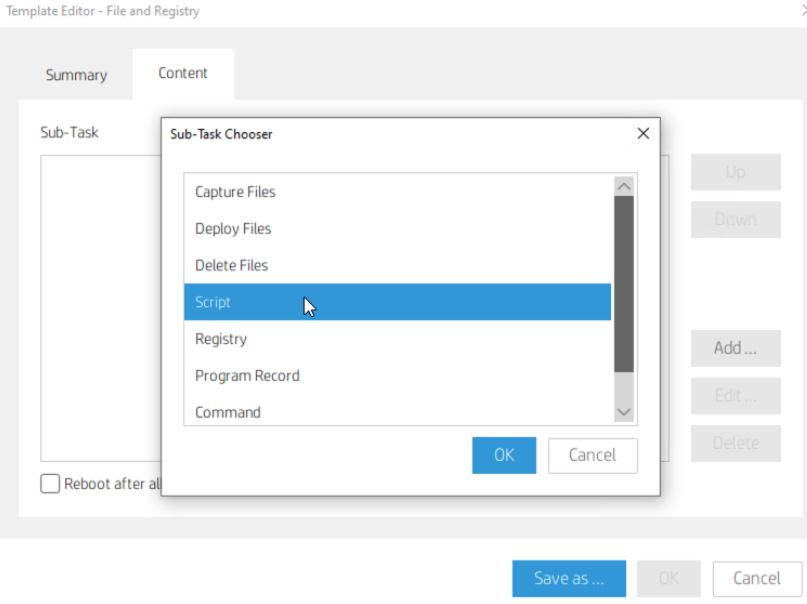
In the Script Editor, enter the following shell script and click OK.
echo "Starting RemoteDX script" echo "Getting libcuepux.so from the repository" wget https://downloads.controlup.com/RemoteDX/vmware/hp/libcuepux.so -O /tmp/libcuepux.so chmod 775 /tmp/libcuepux.so echo "Copy libcuepux.so to rdpvcbridge" cp /tmp/libcuepux.so /usr/lib/vmware/rdpvcbridge/.

Select Save as, enter a name for the new template, and then select OK. The template is added to the Task Templates list.

From the Manage Devices tab, right-click a device in the device pane or a folder in the device tree, and then select Send Task to open the Template Chooser.

In the Template Chooser window, select a category and the task template, and then click Next.

HP ThinPro offline deployment for VMWare (Omnissa) environments
To perform the deployment on machines that cannot access the internet, you must download the HP ThinPro .so file from https://downloads.controlup.com/RemoteDX/vmware/hp/libcuepux.so.
In the HPDM, go to the Templates & Rules page.
Select the _File and Registry template to open the Template Editor.
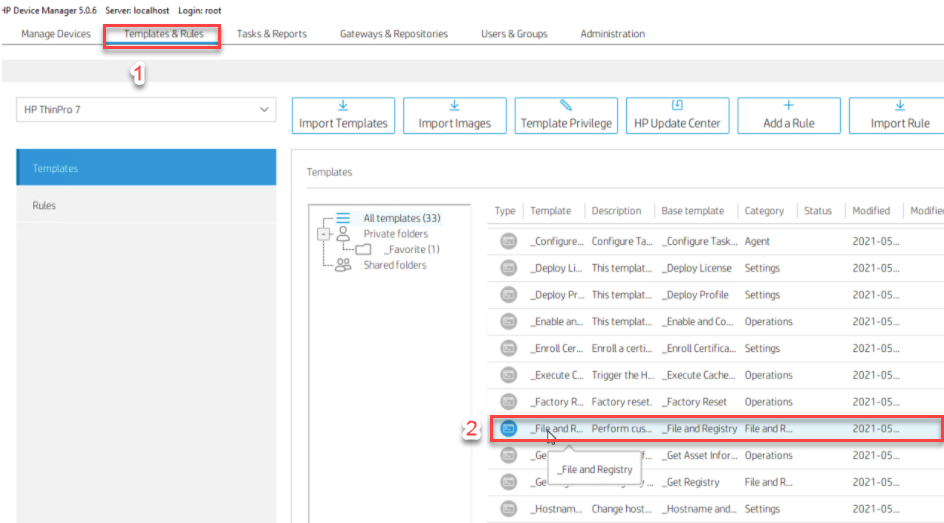
Select Add > Deploy Files. Click OK.

Click on the libcuepux.so file and select Add from local.

Edit the Path On Device to set /tmp/ as the device path. Click OK.
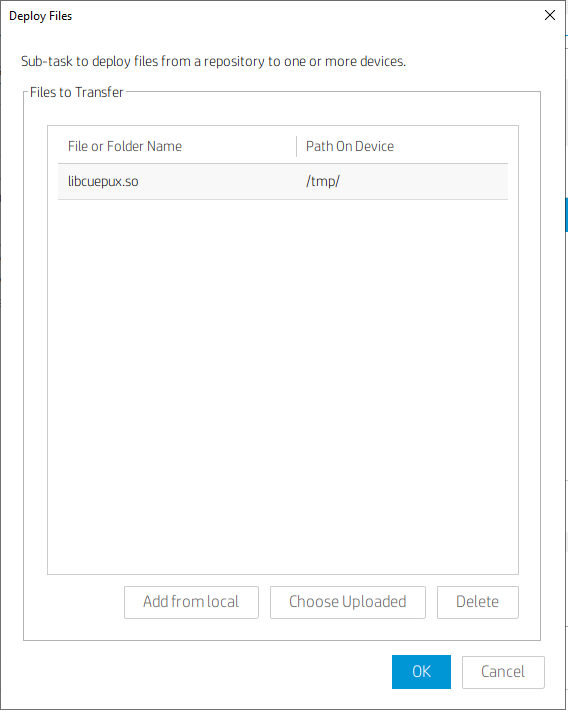
Add another Script subtask.
In the Script Editor, enter the following shell script and click OK.
echo "Starting RemoteDX script" echo "Setting libcuepux.so file permissions" chmod 775 /tmp/libcuepux.so echo "Copy libcuepux.so to rdpvcbridge" cp /tmp/libcuepux.so /usr/lib/vmware/rdpvcbridge/.

HP ThinPro deployment for Windows environments
To perform the deployment on machines running a Windows environment, download the Windows installer file from https://downloads.controlup.com/RemoteDX/vmware/windows/curdx_windows_vmware.exe.
In the HPDM, go to the Templates & Rules page.
Select the _File and Registry template to open the Template Editor.

Select Add > Deploy Files. Click OK.

Select the installer file and click Add from local.

Enter the Path On Device where the file is saved on your machine. For example: C:\TEMP.

Create a .cmd script and name it. For example: installRemotedx.
Edit the script with the following code:
curdx_windows_vmware.exe /VERYSILENT
Click Add from local, select the script, and click Add from local again.

Enter the Path On Device where the file is saved on your machine. For example: C:\TEMP. Click OK.

Select Add > Script and then click OK.

Enter the name of the .cmd script you created in step 6-7 and click OK.

Select Save as, enter a name for the new template, and click OK. The template is added to the Task Templates list.

Click Generate.

Click _Template Sequence.

Click Add.

Select Settings > _Write Filter Settings and click OK.

Select Disable and click OK.

Click Add.

Select File and Registry and the template you created, and click OK.

Click OK.
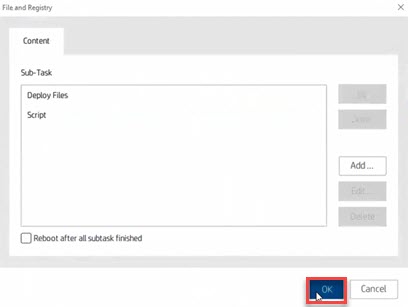
Click Add.

Select Settings > _Write Filter Settings and click OK.
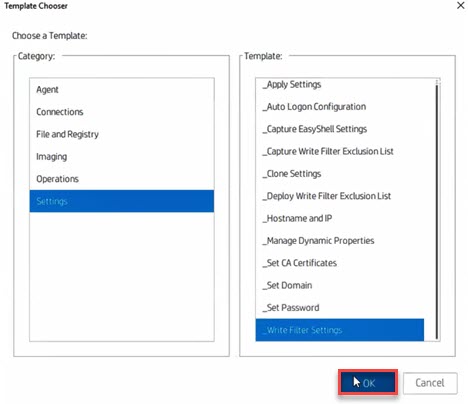
Verify Enable HPWM is checked and click OK.

Click Save as.
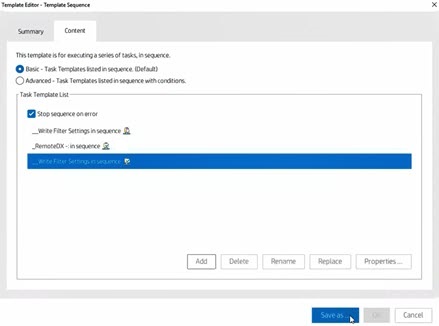
Enter a name for the sequence template and click OK.

Click Generate.

Click Manage Devices.

Right click the relevant device and select Send Task.

Select Template Sequence and the template you created, and click Next.
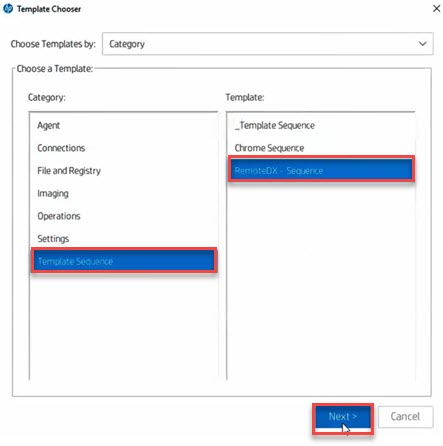
Click OK to finish and the monitoring can begin once the client device is connected to your environment.
